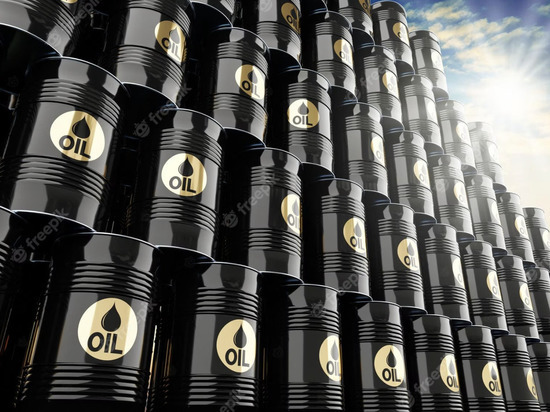How much Russia loses from the decline in world oil prices
[ad_1]

The expert explained the features of trade in “black gold” in the face of tough Western sanctions
Oil prices on the world market are going down. Over the past two weeks, a barrel of international Brent brand has fallen in price from $86 to $75. The export Russian brand Urals, respectively, is also getting cheaper. At the same time, the price “ceiling” set by our “enemies” from the G7 and the EU is actively pressing on domestic participants in the “black gold” market. For Russia, this situation has already turned into problems with the formation of the federal budget, whose deficit increased sharply in January-February of this year. What threatens our country with the current decline in world oil prices? How will Russian energy supply routes change? Will the federal budget deficit continue to grow due to insufficient receipts from oil exports? We asked Natalya Milchakova, Leading Analyst at Freedom Finance Global, about this.
– The average price of Urals oil in January-February 2023 was $49.52 per barrel, having almost halved compared to the same period last year (it was $88.89), the Ministry of Finance said in a statement. Is this the result of global processes in the global hydrocarbon market or the result of anti-Russian sanctions in the oil sector?
– It is worth recalling that in January-February 2023, the average price of Brent crude oil was also higher than in the same period last year. The Russian brand Urals is always sold at a discount to Brent on the world market. At the beginning of 2022, a barrel of Brent cost an average of $93, and a year later, the quotes of the international “barrel” fell to $83. Now it is even lower by 8-10 dollars. So we are talking about a global trend in the global oil market.
– But theoretically, the cost of Urals should also have fallen by no more than $10-15… However, many bidders claim that domestic producers, in the face of severe Western sanctions, have to offer significant discounts to buyers in order to sell the produced hydrocarbons in principle?
– Yes, there is no need to build illusions. The Urals discount to Brent due to the “price ceiling” for oil, set at the end of last year by Western countries, radically changed the mood of exchange players. If a year earlier this discount to Urals averaged about $7 per barrel, then this year its size has increased dramatically. The increase in the discount is due to the fact that Russian oil companies are redirecting their export flows from Europe to the East and South of the planet – to Asia, Africa, Latin America – accordingly, attracting new customers by providing attractive discounts, reaching up to $15-35 per barrel.
– In other words, is Russian oil becoming a cheap commodity?
– Not certainly in that way. I think the stock price of Urals may grow in the second half of the year. At the same time, it should be taken into account that Urals is only one grade of Russian oil, which continues to be quoted on international commodity exchanges. Many, including European countries, buy this brand for further processing into finished motor fuel, since the capacities of their distilleries are designed specifically for high-sulfur substances. While other, “lighter” grades of Russian oil, such as ESPO, are currently trading at $80 per barrel or even higher, according to international agencies. This grade of “black gold” is delivered through the pipeline “Eastern Siberia – Pacific Ocean” to the Far Eastern ports, and then by sea to China. This Russian brand of hydrocarbons suits the Celestial Empire, which indicates that Beijing has become a guaranteed buyer of Russian hydrocarbons for many years.
– You say that in the future the price of the Urals brand may rise. What factors can contribute to this, because no one is going to ease sanctions against the oil sector? On the contrary, now even more tightening of the “ceiling” is being discussed – from $60 to $55 and even up to $51…
– We started the conversation with the average price of the Urals brand ($49.52), which was reported by the Ministry of Finance. It is quite possible that the source for calculating this figure was the data of Western agencies, since outside of Russia there is no exchange mechanism for determining the price of the Urals brand. This average value could also include the price that was formed (again according to Western data) at the end of January in one of the ports of the Baltic Sea at $38 per barrel – hence such a low figure. Accordingly, the question here is not even at what price Russia will sell oil, but who and how will determine the market price of Urals, which will become a benchmark (base level – author) for negotiations with buyers. The Ministry of Energy of the Russian Federation is already studying the issue of creating its own mechanisms for determining the price of Urals, so as not to depend on Western sources, which can be, to put it mildly, very subjective. In addition, the increase in the so-called “shadow tanker fleet” by Russia, with the help of which our “black gold” is currently being transported, also speaks in favor of the future growth in oil prices. That is, if Russia acquires additional vessels for cargo transportation, it means that the demand of buyers for Urals, even despite the embargo of Western countries and the “price ceiling”, remains and even grows.
[ad_2]
Source link






